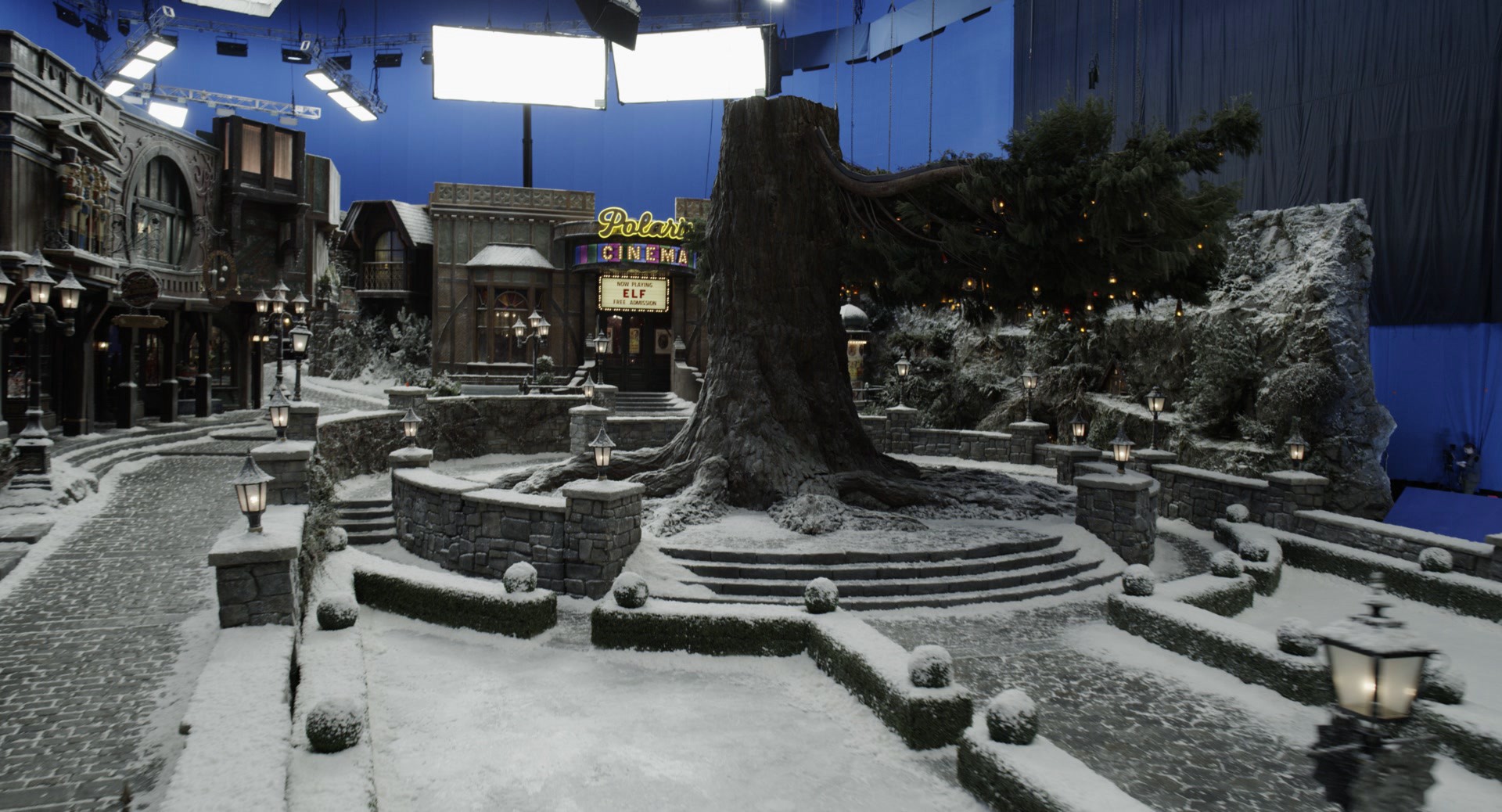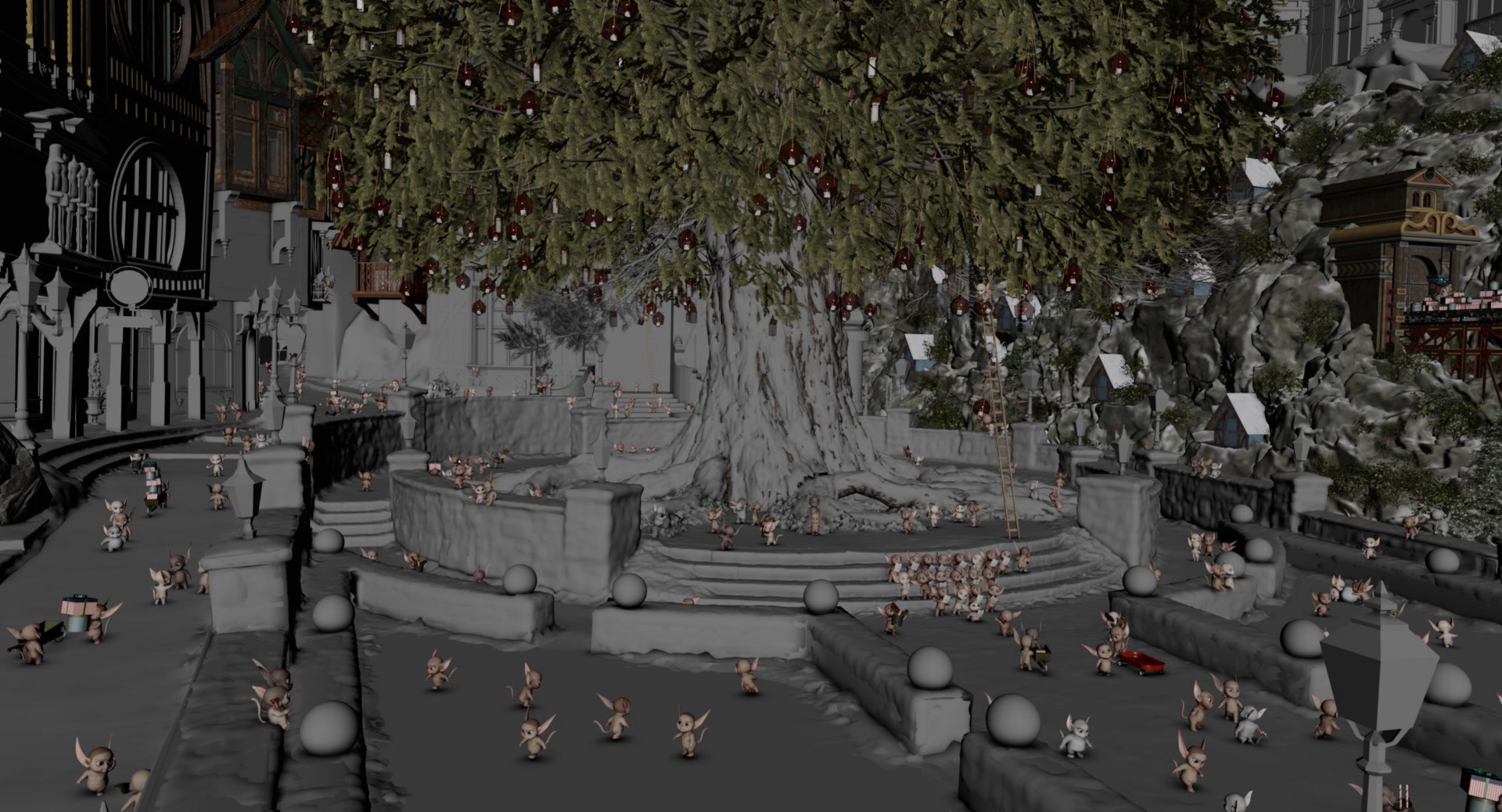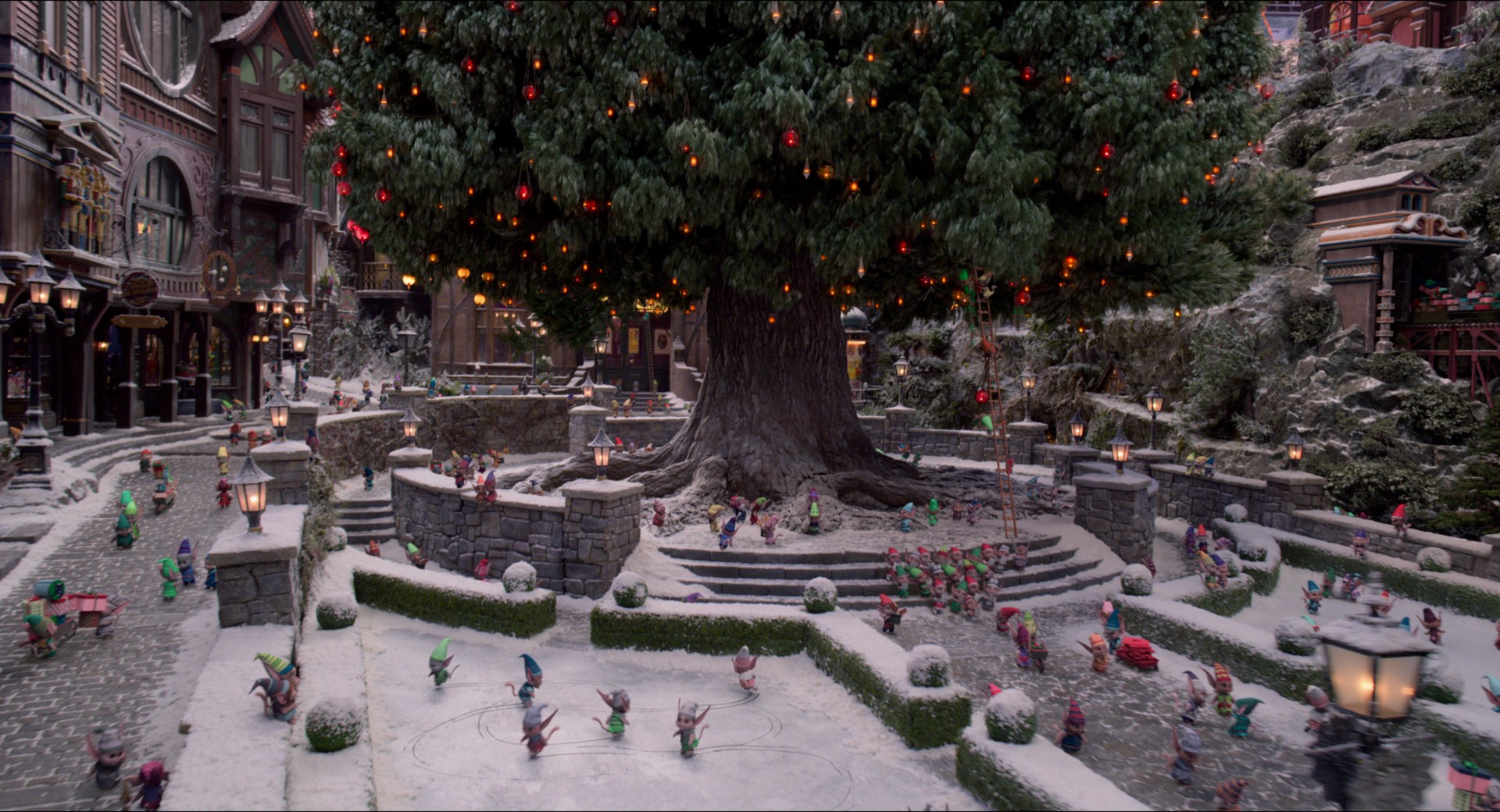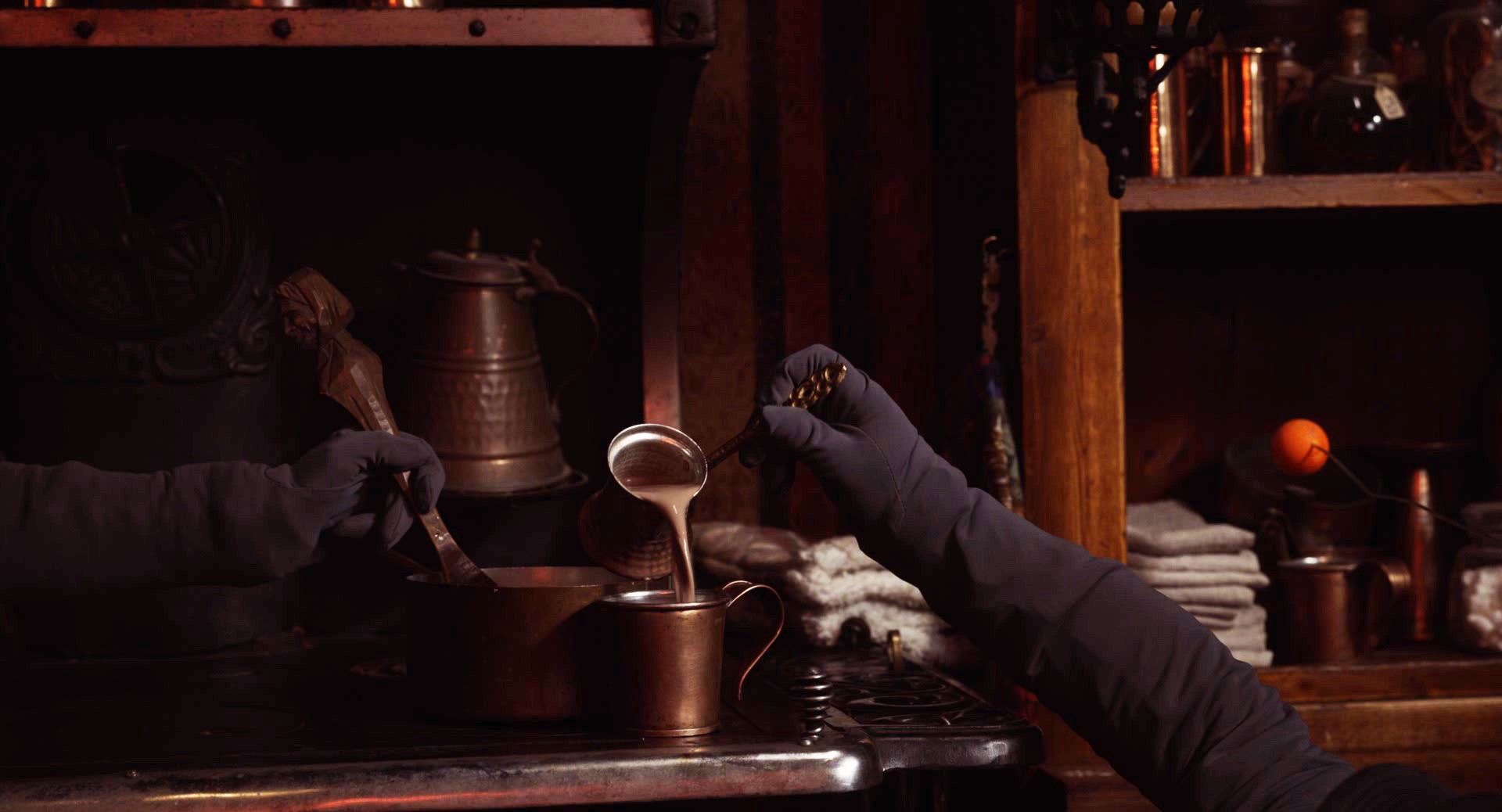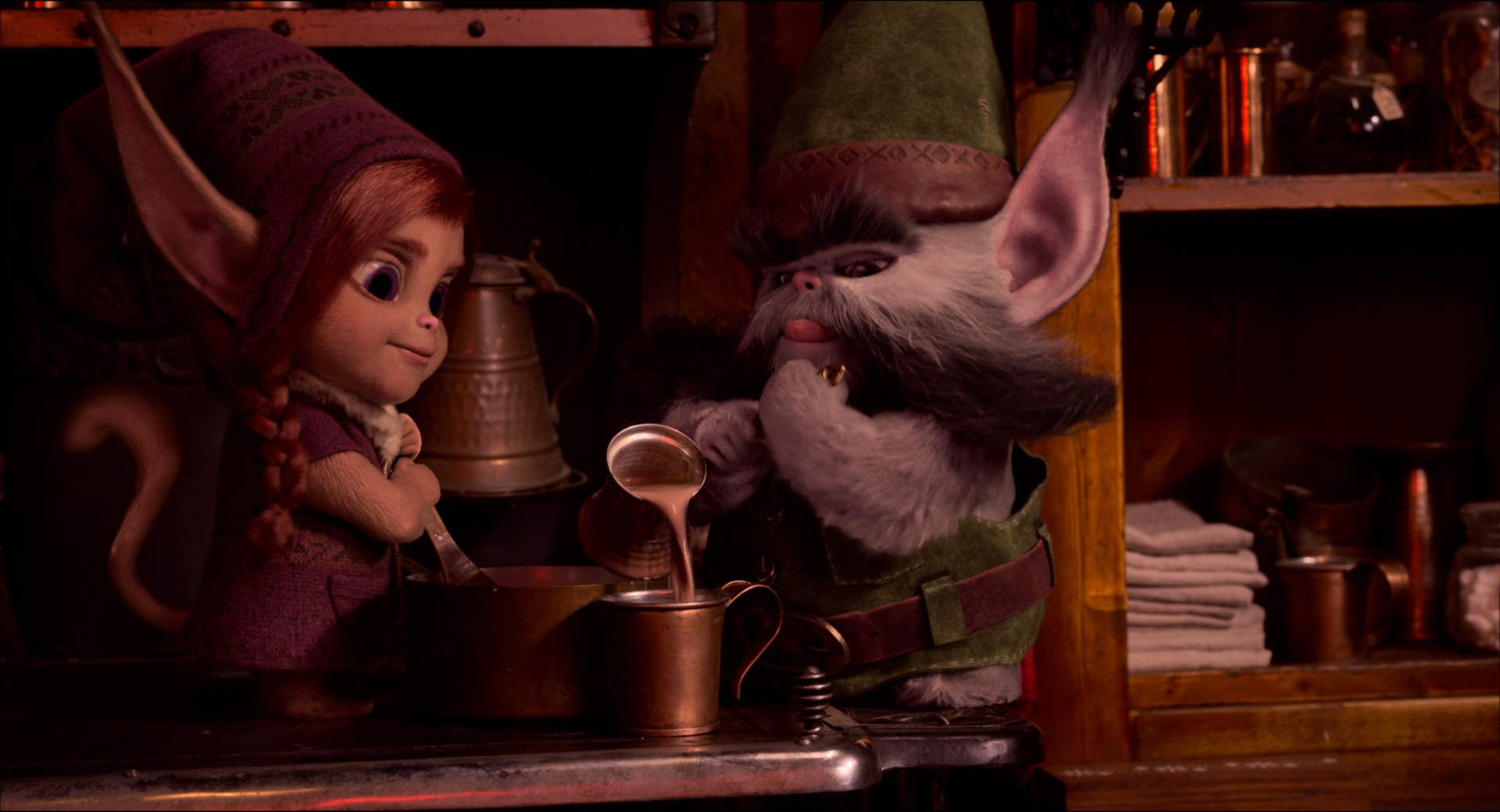Netflix created a new holiday hit with 2018’s The Christmas Chronicles, a family-friendly adventure that cast Kurt Russell as Santa Claus, whose annual gift-giving quest is endangered when a pair of young stowaways on his sleigh cause it to crash in Chicago. The film’s modern spin on Christmas lore, along with a talented cast and spectacular visual effects, made it one of the more recent additions to the list of must-see holiday movies.
The film’s sequel, The Christmas Chronicles 2, premiered November 25 on Netflix, and brought back much of the original cast while introducing Julian Dennison (Hunt for the Wilderpeople, Deadpool 2) as the film’s villain, Belsnickel. In order to bring its magical story to life, Oscar-winning visual effects studio Weta Digital crafted everything from the elves populating Santa’s village to Belsnickel’s steampunk sleigh pulled by a group of bizarre mash-up creatures and the savage yule cat, Jola.

Digital Trends spoke to Martin Hill, Weta Digital’s visual effects supervisor on the film, and Nick Stein, the film’s animation supervisor, about how they upped the visual-effects ante on The Christmas Chronicles sequel under the guidance of director Chris Columbus (HomeAlone) — a filmmaker who knows a thing or two about holiday movies.
Digital Trends: When you first join a project like The Christmas Chronicles 2, with so many fantastic elements that you can work on, where do you start? Do you approach it differently than a film that’s more grounded, where the visual effects have to be more subtle?
Martin Hill: When you get a show like this, you have much more of a blank canvas to be able to paint on. One of the things Chris [Columbus] wanted was to keep a lot of the scenes very alive, particularly in the village and in the individual shops. They wanted it to be bustling and have lots of things going on, which meant we could just go crazy with the little vignettes going on everywhere. So in all the big shots where we’re going through the village with elves all around, we got together and went, “What crazy stuff can we have them do?” We wanted to give it a lot of rewatchability, making sure we guide toward the main focus the first time, but if you’re watching a second or third time, they’ll notice different things happening in the background.
Nick Stein: With this project, you’ve got a little bit of everything. We had the creature-work with Jola, which Weta loves doing, and then there’s the reindeer, and the dogfighting sleighs, and the jackalotes [a mix of jackals and coyotes]. And then, of course, there’s the elves going crazy, which borders on the cartoony side of things, but you still try to find that balance of keeping it real and weighted in the shots.
How do you maintain that balance?
Hill: Chris really wanted the elves to feel very real and integrated in their scenes, so we needed to go in and work on all their fur and their lighting and costumes and textures, to make sure they looked real. Once we had them acting with real weight, so their performances were reality driven, then it was kind of like, “OK, now we’ve got them in this world. How do we make them more fun and cartoony?” We gradually introduced more Looney Tunes-type elements into it, seeing how far we could push that before we broke the tone of the film.
So there are these realistic elements, like the opening shot of Santa where the camera swoops down into the Arctic wilderness, with the rumble of the sleigh riding on the ground being pulled by the reindeer, while the Yule cat, Jola, is running from it. And that’s all real physics. It’s all reality-based. But then, of course, they just take off into the air. At that point, all bets are off. You can start to have some good fun with that and compose it in a different way. I love that mix of styles.
More great streaming holiday movies
- The best Christmas movies on Netflix right now
- The best Christmas movies on Hulu right now
- The best Christmas movies on Amazon Prime right now
Some crazy new creatures debut in the film: Jackalotes. They’re described as a mix of jackals and coyotes, but what’s the story behind their creation?
Hill: The jackalotes were really fun. Production designer Jon Hutman designed Belsnickel’s sleigh with an engine, and we had it running and rattling and billowing smoke, and we had this idea about doing a sort of chariot race chase inspired by Ben-Hur with Santa and Belsnickel. That’s where the blades coming out of Belsnickel’s sleigh come from: Ben-Hur. But when we put the two sleighs side by side, some of the shots from Ben-Hur we were paying homage to didn’t pay off. We needed to go from the noble, proud reindeer pulling Santa’s sleigh to whatever was pulling Belsnickel’s sleigh. So we said, “We need some creatures pulling Belsnickel’s sleigh. What are they going to be?”

Belsnickel’s tech is a little bit steampunk and cobbled together. So we thought, creature-wise, it should be a similar thing. The merging of jackals and coyotes is where the name came from, but we wanted to make it more fun — crazier and crazier. So we gave them these big, expressive faces and big, bold eyes. When I talked to the concept designers, I said: “Make sure you give them tongues long enough to slap themselves in the eyes. We’re going to use that. We don’t know where yet, but we’re going to use it.”
Stein: Yeah, from a motion standpoint, we actually looked at a lot of creatures. The jackalotes are quite large in terms of size and weight, so we looked at lions and hyenas for inspiration. Earlier designs of the jackalotes actually had the hyenas’ elongated necks. Chris has a bulldog, so we decided to also include a few little elements in there from that, particularly with the facial expressions.
Hill: During the final finessing of the design, Chris was like: “You know the dog that’s barking in the background of all our calls? Maybe we could get a little bit of that in there?”
So many of the film’s visual effects are right on the surface and easy to spot, but what’s something you worked on that people might not realize is a visual effect?
Hill: One of the things I pushed for early on was to interact with what’s in these beautiful sets we had. So there are a lot of little shots, like when [the two elves] Jojo and Hugg are stirring and pouring hot chocolate, that integrated well with what we had on the set. [For that shot], we could have used fluid simulations for the hot chocolate, but instead, we had stunt puppeteers actually scoop hot chocolate and pour it into the cup with gray gloves on. Then we created the animation around that. There are lots of little pieces like that in the film. It’s all about having those real elements that tie the CG into the scene.
One of my favorites, though, is when Jola meets Belsnickel at the end of the Arctic wilderness chase and Jola gives him a lick. We had puppeteers use a big maquette of Jola with a big, wet, spongy tongue on it. They kind of nudged him with it and gave his face a big lick. That kind of physicality of having something of that size shove the actor, Julian Dennison, gave it a lot more weight. And that’s something the animators can really work with, too, that grounds it all in reality.
The elves are handled in such a unique way in the Christmas Chronicles films. How did you approach making each one feel unique and give them a sense of character?
Stein: Early on, we did a lot of testing on how we wanted them to move. We jumped on the motion-capture set and did tests there, and then we tried keyframing, because that’s generally the way you make little creatures like this move through animation. We really wanted to give them a weighted feel to them, even though they’re only 40 centimeters tall, so in the end, we opted for a hybrid of the two.
[With the elves], each shot was different, depending on what was needed. We would start with a mo-cap for reference as a base, and then we’d do little tweaks to give them a bit more bounce or squash and stretch. When they did things like backflips off fences and jumped off each other’s heads, then we had to go into traditional keyframing to break the physics — but to be honest, it’s a bit of a hybrid in most shots.
Hill: One thing we really wanted to avoid was the typical crowd-simulation approach. We knew we had shots with thousands of elves, but in order to make the village feel unique and alive without feeling like it was all cut-and-paste, we wanted to pay attention to every area and have these little vignettes going on all over. So there’s a lot less crowd motion than you’d traditionally use.



What’s the scene you’re most proud of working on in Christmas Chronicles 2?
Stein: The chase with the two sleighs. That was really fun to work on. There were always these little character moments where the camera would fly past the jackalotes and they’d be doing crazy stuff like biting the reindeers’ antlers or licking the jackalote beside them. We could really kind of play with it, which was really fun for us to do.
Hill: For me, it was probably the reveal of Santa early on. It was the very first shot we showed Chris. The script had it down as “Santa chases Jola through the Arctic wilderness to the sounds of Immigrant Song by Led Zeppelin.” That’s all the script had. And we were like, “We’re going to run with this.”
So we made this opening shot with a beautiful vista of Arctic wilderness based on Brandywine, near where we shot in Vancouver. And then the camera comes down as if it’s a drone camera, and it becomes a sleigh camera, and then Jola rushes into the frame. It’s at that point the guitars come in on Immigrant Song, and the camera wraps around as Santa comes into frame. That’s when Robert Plant’s vocals [in Immigrant Song] come in. It’s all timed to that. But in the end, we didn’t use that music in the final film.
One of the things I’m really proud of, however, is that we got that scene polished to such an extent that the music is still one-to-one with the final shot. You can actually still play Immigrant Song timed to that scene in the movie. And it still all works. It’s perfectly timed. And for me, it shows all the work that went into that shot really paid off.
I did not expect a Christmas Chronicles 2 and Led Zeppelin connection to come out of this interview.
Hill: One of the weird things I learned while working on it was that the riffs in Immigrant Song are the same forwards and backwards. When I was scrubbing the animation and playing it backwards, I realized Robert Plant’s vocals — when he does those little vocalizations at the beginning — they’ve been recorded and rerecorded backwards.
Stein: Well, now I have to try that, too.

Directed by Chris Columbus and starring Kurt Russell, Goldie Hawn, and Julian Dennison, The Christmas Chronicles 2 is available now on Netflix.
